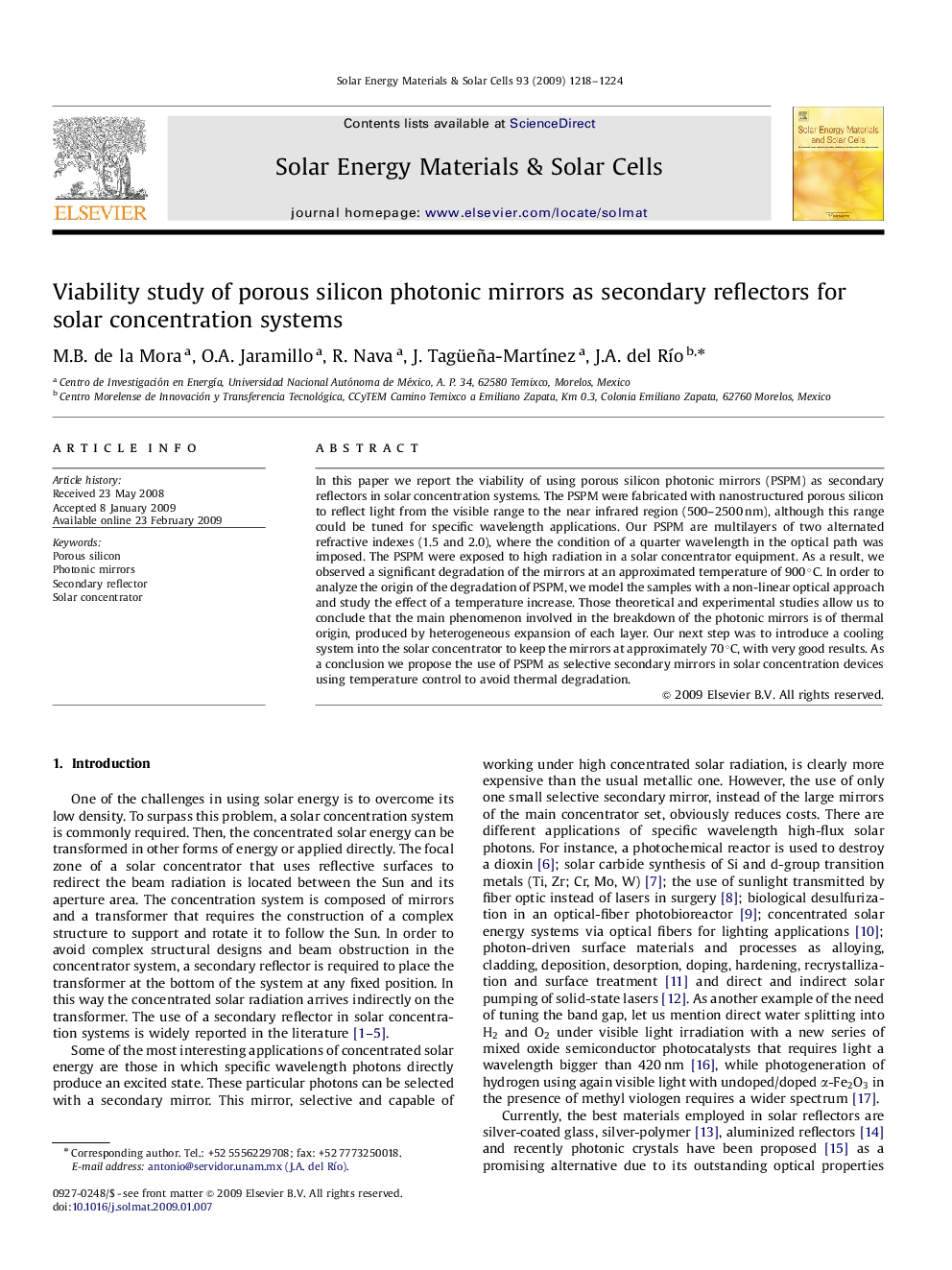| Article ID | Journal | Published Year | Pages | File Type |
|---|---|---|---|---|
| 80455 | Solar Energy Materials and Solar Cells | 2009 | 7 Pages |
In this paper we report the viability of using porous silicon photonic mirrors (PSPM) as secondary reflectors in solar concentration systems. The PSPM were fabricated with nanostructured porous silicon to reflect light from the visible range to the near infrared region (500–2500 nm), although this range could be tuned for specific wavelength applications. Our PSPM are multilayers of two alternated refractive indexes (1.5 and 2.0), where the condition of a quarter wavelength in the optical path was imposed. The PSPM were exposed to high radiation in a solar concentrator equipment. As a result, we observed a significant degradation of the mirrors at an approximated temperature of 900∘C. In order to analyze the origin of the degradation of PSPM, we model the samples with a non-linear optical approach and study the effect of a temperature increase. Those theoretical and experimental studies allow us to conclude that the main phenomenon involved in the breakdown of the photonic mirrors is of thermal origin, produced by heterogeneous expansion of each layer. Our next step was to introduce a cooling system into the solar concentrator to keep the mirrors at approximately 70∘C, with very good results. As a conclusion we propose the use of PSPM as selective secondary mirrors in solar concentration devices using temperature control to avoid thermal degradation.
